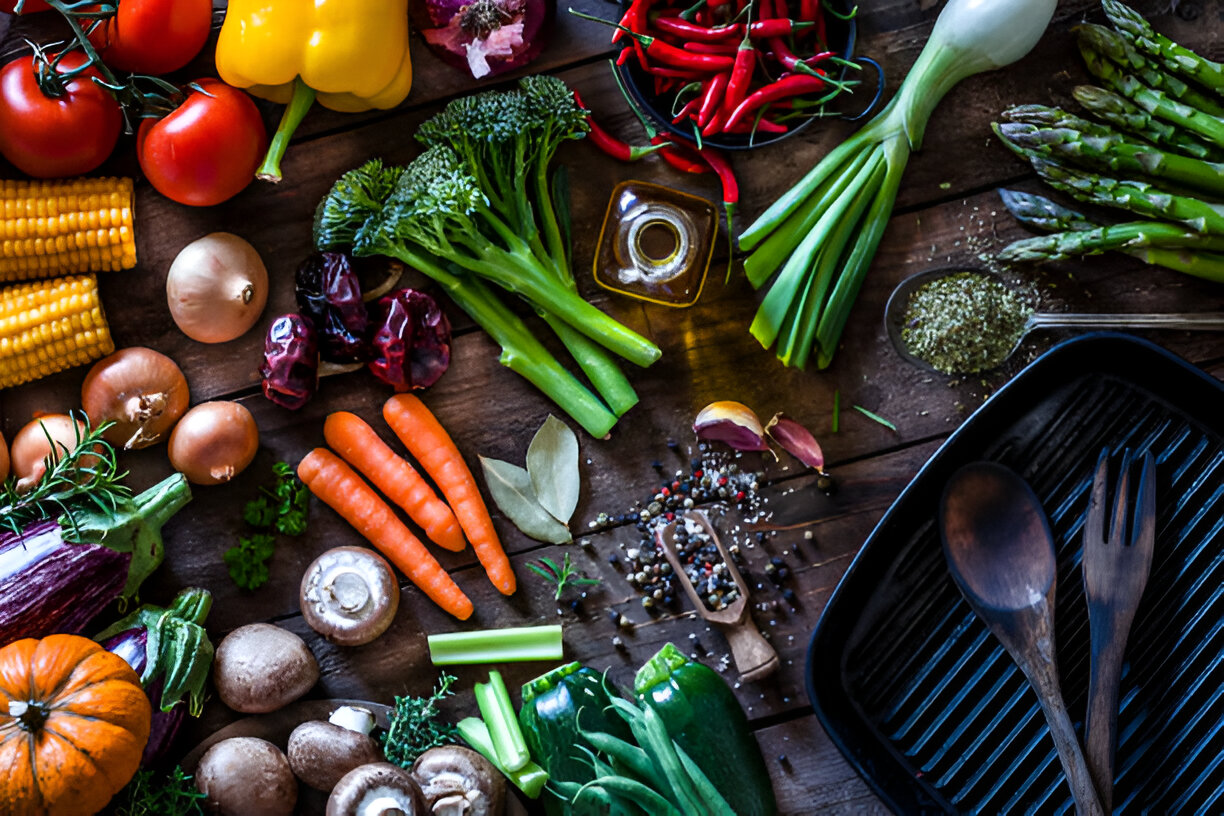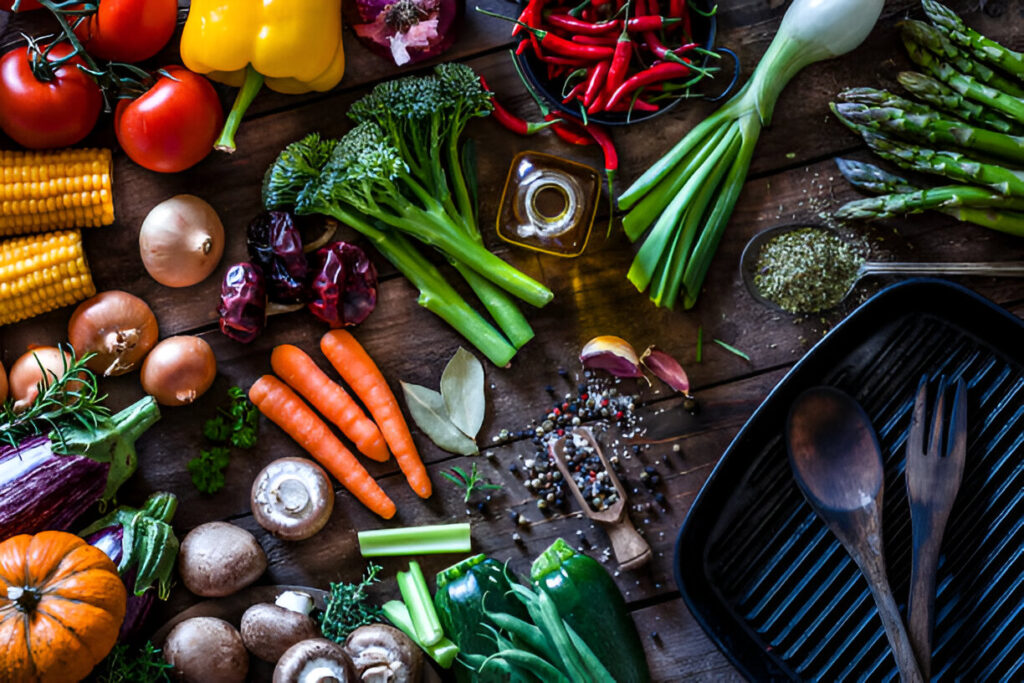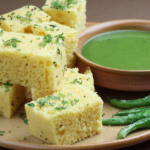
Food is an essential part of every culture and tradition, and it plays a significant role in shaping people’s lifestyles and beliefs. Different religious and cultural practices influence the way food is prepared, consumed, and enjoyed. Among the many distinct culinary traditions, Jain cuisine and Swaminarayan cuisine stand out due to their religious significance and specific dietary restrictions. These cuisines are often compared with regular cuisine, which is more mainstream and less influenced by specific religious principles. In this blog, we’ll dive into the differences between Jain cuisine, Swaminarayan cuisine, and regular cuisine.
This is just information to understand the difference, don’t take this personally.
For Jain Receipes & Jain Cuisine Course Visit Jain Cuisine Combo Course
For Jain Receipes & Jain Cuisine Course Visit Other Cuisine Combo Course

1. Jain Cuisine: A Strict Vegetarianism Rooted in Ahimsa
Jain cuisine is deeply connected to the principles of Jainism, an ancient religion that emphasizes non-violence (Ahimsa) and the protection of all living beings. One of the most distinct features of Jain cuisine is its strict adherence to vegetarianism, not only avoiding meat and fish but also rejecting certain vegetables and food items that could harm living organisms.
- Vegetables and Ingredients: In Jainism, the principle of Ahimsa extends to food preparation, which leads to avoiding vegetables like onions, garlic, potatoes, and carrots, as they involve uprooting the plant, which may kill or harm the plant. Foods are also prepared without fermentation, as it can lead to the growth of bacteria or microorganisms.
- No Alcohol or Fermented Foods: Jains do not consume alcohol or foods that involve fermentation, as fermentation leads to the growth of living organisms. For example, vinegar is avoided, as it is made using fermented liquids.
- Strict Kitchen Practices: Jains also take great care to avoid cross-contamination of their food with non-vegetarian products, ensuring that everything they consume adheres to the strict principles of non-violence.
Summary of Jain Cuisine: Jain cuisine focuses on non-violence, with a diet strictly free from meat, fish, and certain root vegetables. It emphasizes minimal harm to living beings and follows very specific rules regarding food preparation.
2. Swaminarayan Cuisine: A Holistic and Spiritual Approach to Food
Swaminarayan cuisine is rooted in the teachings of Swaminarayan, a prominent Hindu spiritual leader who founded the Swaminarayan tradition in the 18th century. Like Jain cuisine, Swaminarayan cuisine also emphasizes vegetarianism, but it incorporates additional spiritual practices. It is particularly popular among followers of the Swaminarayan sect, which includes millions of devotees worldwide.
- Strict Vegetarianism: Swaminarayan followers maintain a vegetarian diet, similar to Jain cuisine. They avoid eating meat, fish, and eggs, but they also follow additional restrictions.
- No Onions or Garlic: One of the key distinctions in Swaminarayan cuisine is that followers avoid onions, garlic, and mushrooms, which are seen as stimulating the senses and emotions. These ingredients are believed to increase tamas (darkness) and rajas (passion) in a person, which are contrary to the ideal state of purity and calm promoted by the Swaminarayan teachings.
- Pure and Satvic Foods: Swaminarayan cuisine emphasizes “satvic” foods, which are pure, light, and nourishing. The idea is to eat foods that enhance spiritual progress and keep the body in a state of balance and harmony. Foods that are spicy, overly rich, or heavy are avoided, as they can disturb the body’s natural equilibrium and hinder spiritual growth.
- Fasting and Rituals: Fasting is an integral part of Swaminarayan cuisine. During certain festivals or spiritual events, followers may fast or eat only specific foods, such as fruits and vegetables, and engage in prayer and reflection.
Summary of Swaminarayan Cuisine: Swaminarayan cuisine is based on the principle of vegetarianism, avoiding onions, garlic, and foods considered “tamasic.” It focuses on eating satvic foods that promote purity, spiritual well-being, and physical balance. It also includes fasting practices.
3. Regular Cuisine: A Global Melting Pot of Flavors and Practices
Regular cuisine, often referred to as mainstream or global cuisine, refers to the general food practices followed by most people around the world. Unlike Jain or Swaminarayan cuisine, regular cuisine is not typically governed by strict religious or spiritual principles. It is more inclusive, diverse, and based on availability, preference, and cultural practices.
- Variety in Ingredients: Regular cuisine includes a wide variety of ingredients and food preparations, such as meat, poultry, fish, dairy, eggs, grains, and vegetables. It is not limited by religious restrictions, meaning that people across different regions and cultures enjoy different types of food based on taste and tradition.
- Lesser Focus on Spirituality: Unlike Jain or Swaminarayan cuisines, which have a spiritual and philosophical basis, regular cuisine is often driven by practicality, convenience, and taste preferences. The focus is on providing balanced nutrition, satisfying hunger, and enjoying the diversity of world cuisines.
- Cultural Influence: Regular cuisine varies significantly depending on geographical location, historical influences, and available resources. From Italian pasta to American burgers to Indian curries, regular cuisine is a mix of regional flavors, techniques, and ingredients that cater to a wide range of dietary needs.
Summary of Regular Cuisine: Regular cuisine is a diverse and inclusive category that embraces a variety of ingredients and cooking methods. It is less influenced by religious or spiritual guidelines and focuses more on taste, nutrition, and regional preferences.
Key Differences: Jain Cuisine, Swaminarayan Cuisine, and Regular Cuisine
| Aspect | Jain Cuisine | Swaminarayan Cuisine | Regular Cuisine |
| Dietary Restrictions | Vegetarian, no root vegetables, no fermented food | Vegetarian, no onions/garlic, satvic foods | Varied (includes meat, fish, dairy, eggs, etc.) |
| Focus | Non-violence (Ahimsa), minimal harm to living beings | Purity, spirituality, satvic diet | Taste, convenience, nutrition |
| Food Preparation | Strict rules to avoid harm to life | Focus on purity and harmony, no tamasic foods | Based on personal preference and convenience |
| Fasting | Often observed, especially during festivals | Common, especially during spiritual observances | Varies by culture, not typically religious |
| Common Ingredients | Vegetables, legumes, grains (no garlic, onions, potatoes) | Vegetables, legumes, grains (no garlic, onions, mushrooms) | A wide variety of ingredients including meat, dairy, and vegetables |
For Jain Receipes & Jain Cuisine Course Visit Jain Cuisine Combo Course
For Jain Receipes & Jain Cuisine Course Visit Other Cuisine Combo Course
More About us




